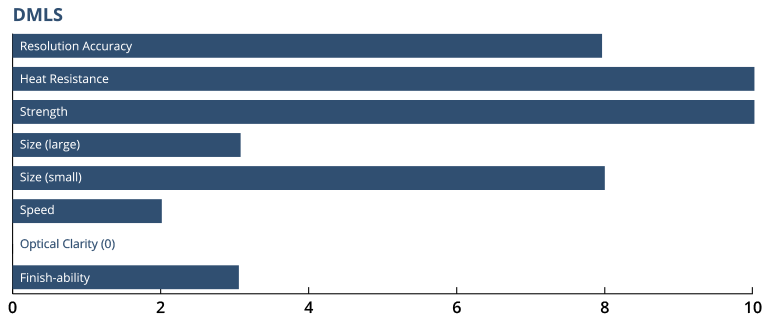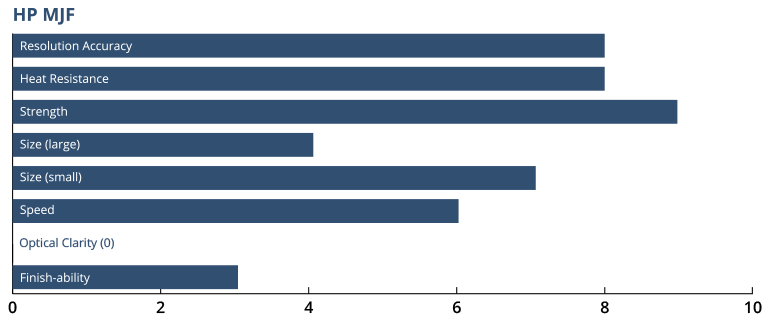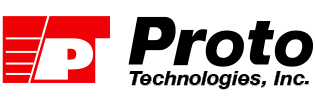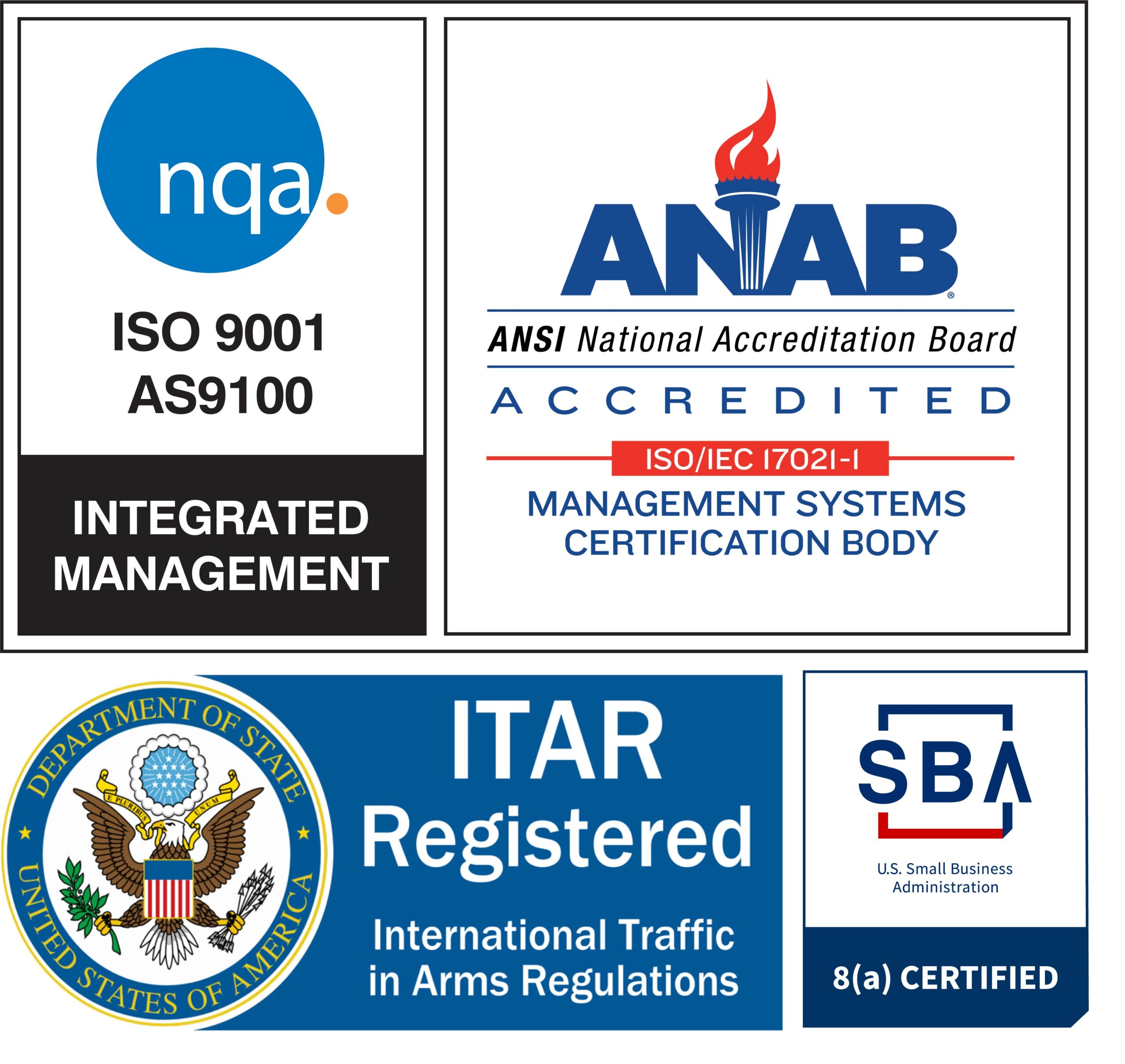
Proto Technologies is the Forefront of 3D Printing
Since 1995 Proto Technologies has been at the forefront of 3D printing. Our commercial 3D printers are capable of printing in the finest resolutions available, and our post process finishing means that your are not limited by size, color, or surface finish.
Building on our in-house capabilities, Proto Technologies has developed strategic partnerships throughout the industry to offer turnkey competitive printing for metals, plastics, or any materials we may not offer in-house.
- Multi-material in a single print.
- Flexible, rigid, optically clear, food safe, high heat, and chemical resistant materials available.
- Tapped holes and threaded inserts available.
- QC/dimensional verification.
- 3D print molds/tooling for silicone casting and thermoforming.
Types of 3D Printing
Stereolithography (SLA) was the first largely accepted rapid prototyping technique, which was first introduced in the early 1980’s. A laser which generates a small intense beam of ultraviolet (UV) energy is moved by the machine’s optical scanning system across a vat of photosensitive liquid polymer, building your part layer by layer. As the UV beam comes in contact with the polymer, it solidifies to create your finished part. Each layer is intricately drawn and leveled to create a solid, seamless part.
The SLA process builds parts in thin layers and with intricate support structures for large horizontal pieces of material. After printing, all SLA parts can be finished using various methods of sanding, sandblasting, painting or dying to provide you with the high quality part you need for your project.
SLA parts can be built in any size, no part is too big!
Our SLA additive manufacturing process lends itself to larger parts and prototypes as we have the ability to build your parts in segments, and then seamlessly bond them together in post processing to give you a solid full scale model of the largest part you can imagine. Our SLA has a vat size of 20” X & Y, 23” Z.
Available Materials:
Somos® EvoLVe 128 – is a durable SLA material that procures accurate, high-detailed parts. It has a look and feel that is almost indistinguishable from finished traditional thermoplastics, perfect for building parts and prototypes for functional testing applications – resulting in time, money and material savings during product development. Somos® EvoLVe 128 is an outstanding material for industries such as aerospace, automotive, medical, consumer products and electronics.
Somos® BioClear produces clear, strong, tough and water-resistant parts. This product is the first in the Somos® BioLine portfolio for medical applications and is ISO 10993-5, ISO 10993-10 and USP VI certified. Somos® BioClear is designed for medical applications that are non-implant and have limited contact with the body, such as dental drill guides and device prototyping.**
Appearance Optically clear, near colorless
Viscosity ~260 cps @ 30°C
Density ~1.12 g/cm3 @ 25°C
Technical data – optical properties
EC 11.5 mJ/cm² [critical exposure] DP 6.50 mils [slope of cure-depth vs. In (E) curve] E10 54 mJ/cm² [exposure that gives 0.254 mm (.010 inch) thickness]
Other SLA Materials are available upon request! We also have multiple finish levels available for our SLA parts.
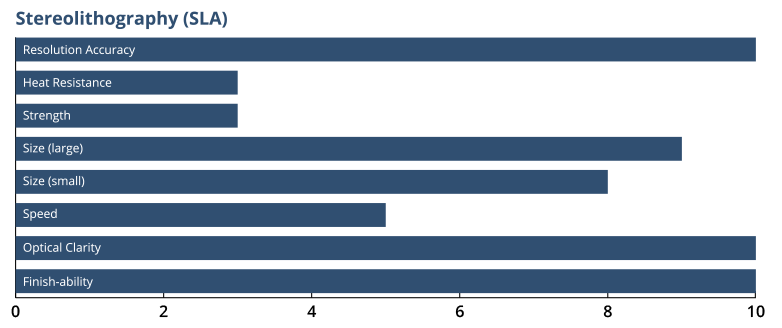
FDM is an additive manufacturing process that uses production grade thermoplastics for the most durable parts. FDM models can be used for conceptual models, functional prototypes, manufacturing tools and end-use parts.
Our Fortus 400mc has a build envelope of 16 x 14 x 16 inches and can build in layer thickness of .005″ to .013″ depending on project requirements. Standard resolution for ABS, Nylon, and Polycarbonate is .007″ and ULTEM is .010″. Layer thickness can significantly affect cost; Please specify alternate resolution when requesting quote. See Data Sheets for resolution options for each material.
Tolerance / Accuracy:
Overall part accuracy ± .005″ or ± .0015″/inch, whichever is greater. Accuracy is dependent on part geometry and layer resolution chosen.
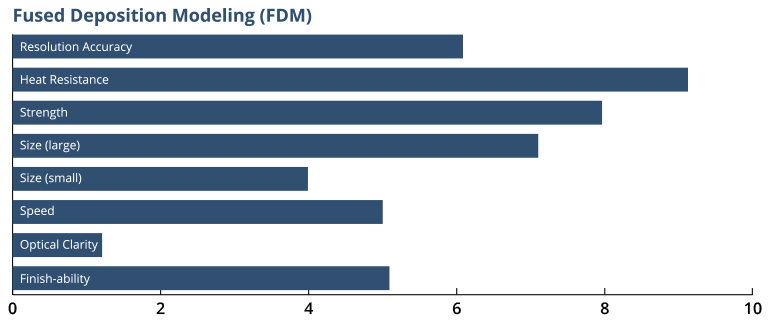
SLS is an additive manufacturing process that uses a high power laser to fuse small particles of plastic, metal, ceramics, nylons, or glass powders into a 3 dimensional object. SLS models are often stronger than Stereolithography (SLA) models and are often used for form, fit, and function testing as well as direct manufacturing applications.
Many different materials are available for SLS applications giving you the ability to choose a material that closely resembles your actual material and approximate some of the physical properties of the end product material of choice. Living hinges are also a possibility to be built into these parts with the use of thermoplastic-like materials.
DuraForm Nylon PA Data Sheet
DuraForm Nylon GF (glass-filled) Data Sheet
DuraForm Nylon EX (durable) Data Sheet
DuraForm HST Composite Data Sheet
DuraForm Flex TPE Data Sheet
Many other SLS materials are available (plastics, metals, ceramics, nylons, glass), just tell us what you need, and we will find it for you! We have multiple finish levels available for our SLS parts.
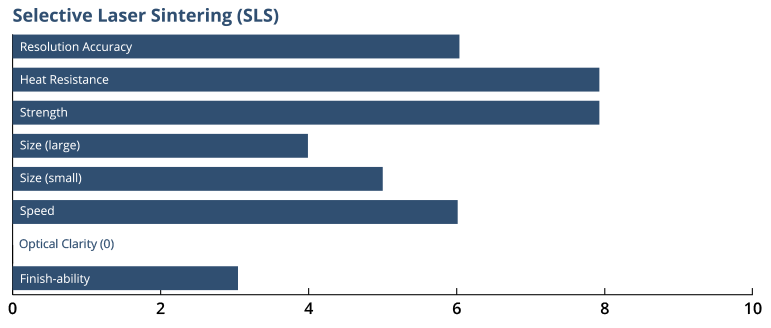
Objet Connex500 Polyjet 3D Printer
Through the use of our Connex500 Polyjet 3D printer, we are able to offer unprecedented speed and flexibility in creating complex parts and models. The Connex500 is the leading additive manufacturing system capable of printing parts and assemblies made of either multiple or digital materials all in one single build. In many cases our customers have found that the use of this printing method provides a compelling cost and time advantage over traditional methods, especially where multiple materials, double injection and over-molding techniques are required.
We have the ability to print your parts in very high quality requiring little, if any, finishing steps to bring your part to life. Parts can be printed with specific Shore A values to match the actual values, as well as smooth and durable surfaces, fine detailing, and even textures to help you realize your final product at an early stage.
The Connex500 can print your parts in layer thicknesses as small as 16 micron. Maximum tray size is 19.3” x 15.4” x 7.9”. Larger parts can be assembled in post-op processing.
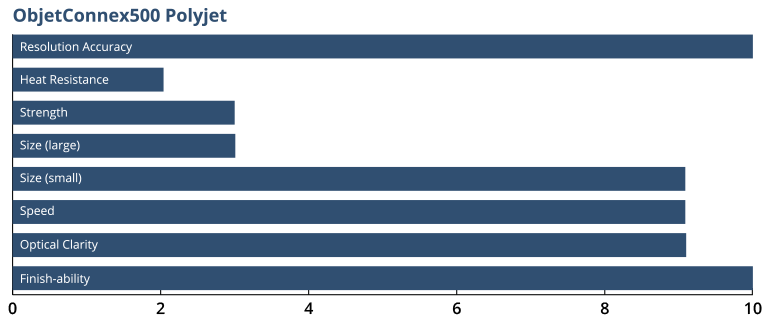
Available Materials
We offer all of Objet’s FullCure and Digital Materials for printing on our Connex500. Call our expert engineers to discuss your project and specifications with us and we can help you determine which of these materials will work best for you. For specific Shore, Tensile, Color and other data on these materials please view the data sheets below:
Materials Brochure
Materials Data Sheet
Digital Materials Data Sheet
Additional Materials Data Sheet
High Temperature Material Data Sheet
BioCompatible MED610 Data Sheet
We can also turnkey quotes that include DMLS (direct metal laser sintering), HP MJF (multi jet fusion), Carbon 3D, or other additive manufacturing technologies thanks to our strong network of strategic partners. We work with our partners to complement our mutual capabilities expanding our 3D print offerings beyond the machines that are physically in our facility.
Any turnkey parts are always QC checked at our facility before shipping to ensure dimensional accuracy and consistency to the CAD files you provide.
If you would like to learn more about metal 3D printing, HP MJF, or other additive manufacturing technology don’t hesitate to contact us today.
